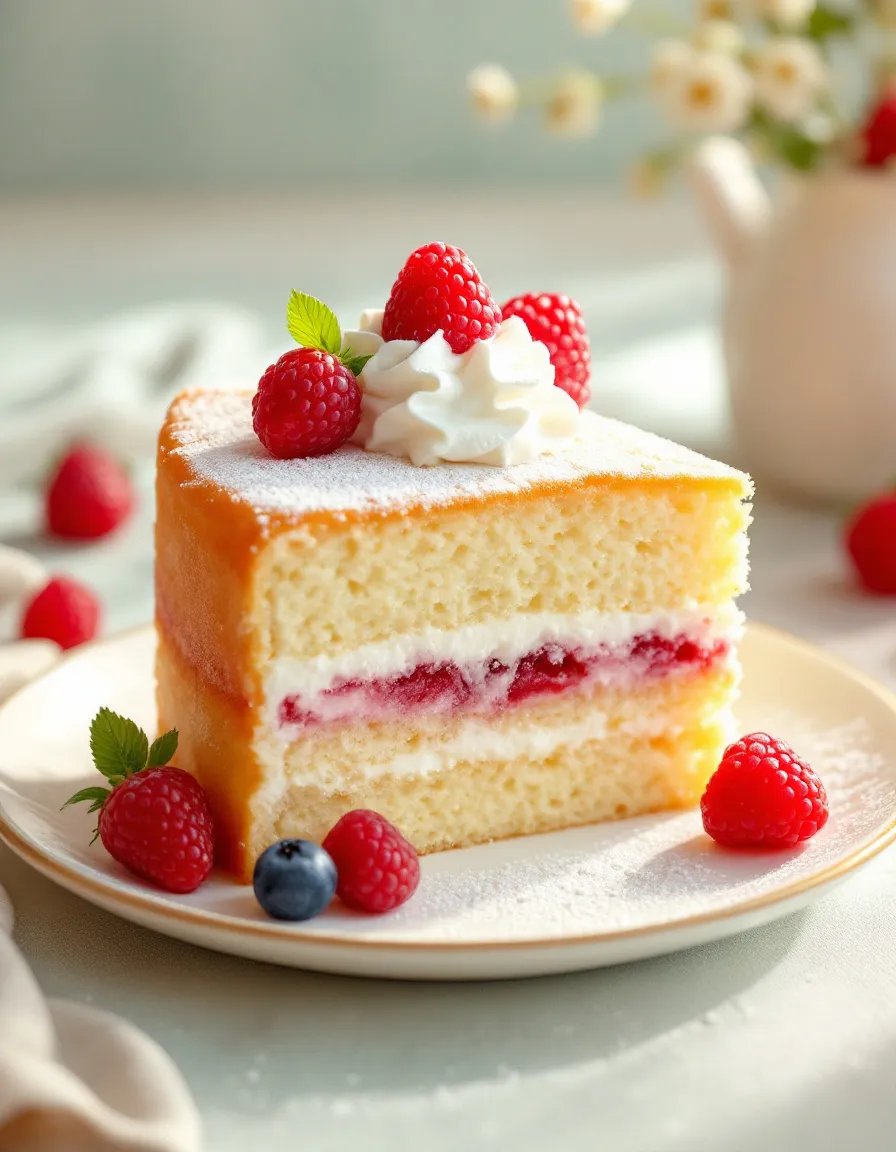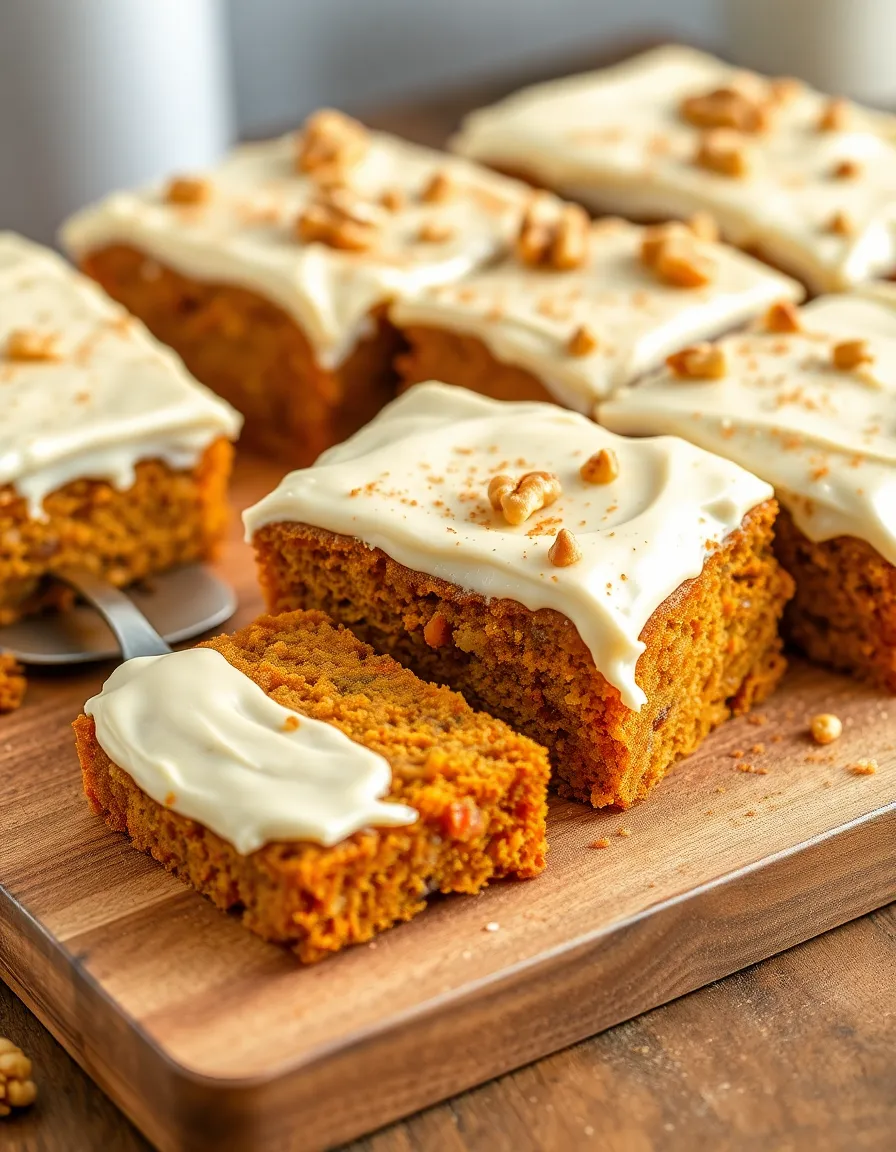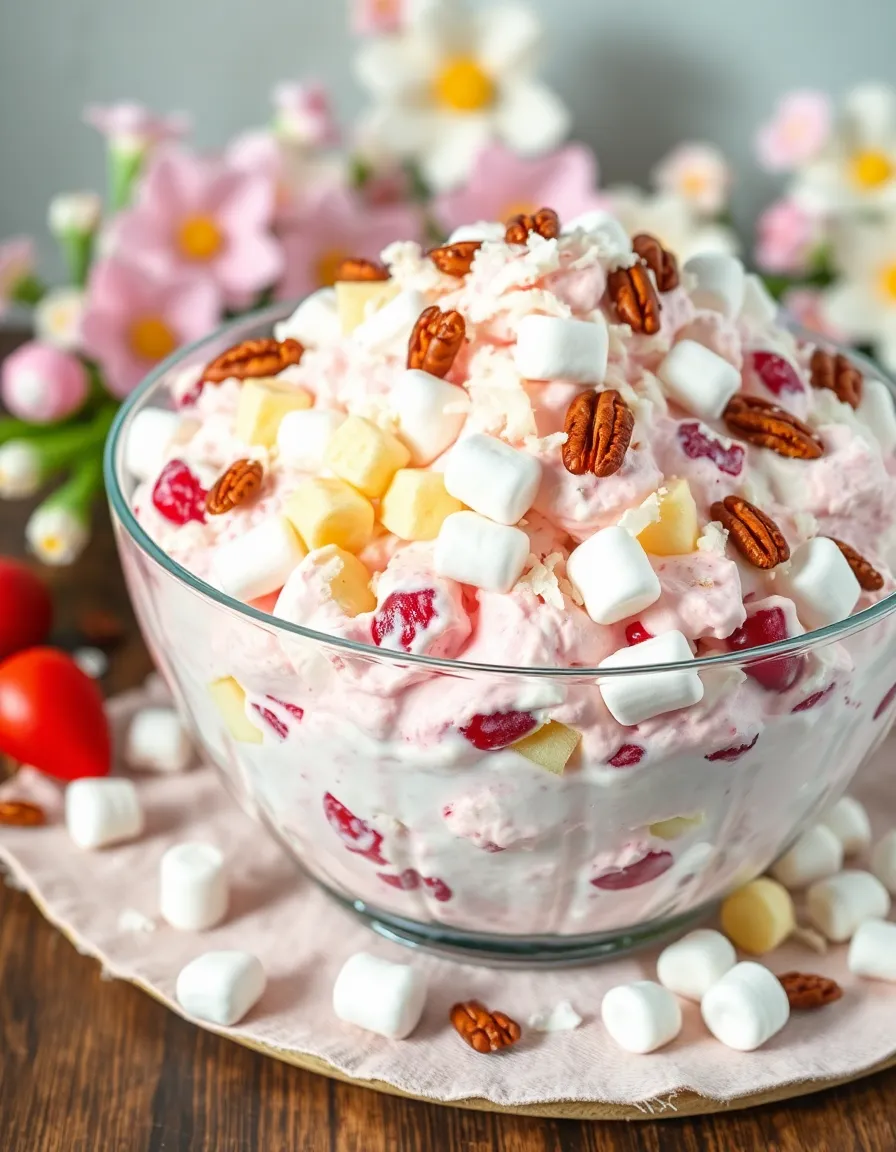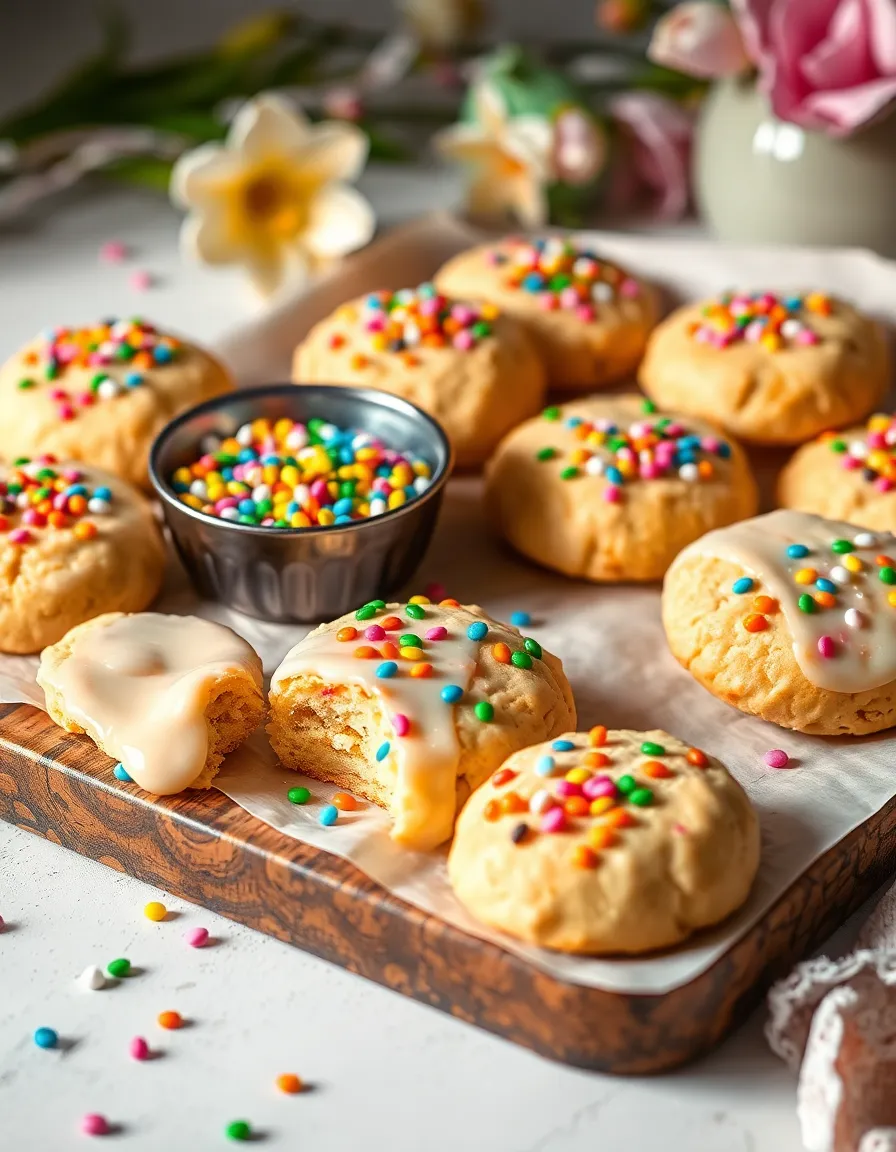Japanese Cotton Cake: The Fluffy, Cloud-Like Dessert You Need to Try
Japanese Cotton Cake is a delicate, cloud-like dessert that melts in your mouth with its impossibly light texture. This heavenly treat, also known as Japanese Soufflé Cheesecake, combines the richness of cheesecake with the airy fluffiness of a soufflé. Originating from Japan, this cake has gained worldwide popularity for its unique texture and subtle sweetness.
When you take your first bite of this cotton soft cake, you’ll experience a delicate balance of flavors—creamy, slightly tangy from the cream cheese, and just sweet enough to satisfy without overwhelming. The cake rises beautifully in the oven, then settles into a jiggly, tender consistency that’s unlike any traditional sponge cake. Perfect for special occasions or an elegant afternoon tea, this dessert is sure to impress both in taste and presentation.
Quick Recipe Highlights
- Flavor Profile: A delicate balance of sweet and slightly tangy, with rich cream cheese notes and a whisper of vanilla.
- Texture: Incredibly light and airy—like biting into a sweet cloud—with a moist, melt-in-your-mouth crumb.
- Aroma: Buttery vanilla with subtle cheesecake notes that fill your kitchen as it bakes.
- Visual Appeal: Golden top with a tall, soufflé-like rise that settles into a beautifully flat surface.
- Skill Level Needed: Requires careful folding and temperature control but achievable for bakers with some experience.
- Special Equipment: Springform pan and water bath setup are essential for proper baking.
Recipe Overview
- Difficulty Level: This Japanese Cotton Cake recipe is intermediate-level due to the precision needed in mixing and baking. The egg whites must be whipped to perfect peaks, and the batter folded gently to maintain airiness.
- Category: Perfect as a dessert, afternoon tea treat, or special occasion cake.
- Cuisine: Originating from Japan, this cake blends Western cheesecake techniques with Japanese precision baking.
- Cost: Moderate—uses common baking ingredients with cream cheese being the most expensive component.
- Season: Excellent year-round but particularly refreshing in spring and summer.
- Occasion: Ideal for birthdays, anniversaries, or any celebration where you want an impressive yet delicate dessert.
Why You’ll Love This Japanese Cotton Cake
The magic of this Japanese Soufflé Cheesecake lies in its ethereal texture. Unlike dense American cheesecakes or dry sponge cakes, this hybrid creation offers the best of both worlds. The cake practically dissolves on your tongue, leaving behind just the right amount of creamy richness and subtle sweetness. It’s the perfect dessert for those who prefer lighter sweets that don’t overwhelm the palate.
Beyond its incredible texture, this cotton soft cake is surprisingly versatile. Serve it plain to appreciate its delicate flavor, or dress it up with fresh berries, whipped cream, or a dusting of powdered sugar. The simple elegance of this cake makes it appropriate for everything from casual gatherings to formal dinner parties. Its clean presentation and cloud-like appearance always draw admiration.
Nutritionally, this cake offers a lighter alternative to traditional cheesecakes. While still containing dairy and eggs, the portion of cream cheese is smaller than in New York-style cheesecakes, and the airy structure means you naturally eat smaller portions. The protein from the eggs helps balance the carbohydrates, making it more satisfying than typical cakes.
The social appeal of this dessert can’t be overstated. Bringing a perfectly baked Japanese Cotton Cake to any gathering instantly elevates the occasion. Its unique texture sparks conversation, and its delicate flavor appeals to a wide range of palates. It’s particularly popular at potlucks and office parties where people appreciate a lighter dessert option.
Cost-wise, this cake delivers impressive results without requiring expensive ingredients. The technique is what makes it special, not rare components. With basic pantry staples and a bit of care, you can create a dessert that looks and tastes like it came from a high-end bakery. This accessibility makes it perfect for home bakers wanting to expand their repertoire.
Historical Background and Cultural Significance
The Japanese Cotton Cake has its roots in Japan’s adaptation of Western desserts during the Meiji era (1868-1912), when the country began incorporating foreign culinary influences. Japanese bakers took the concept of cheesecake—introduced by European traders—and refined it to suit local tastes, creating lighter, less sweet versions.
This cake gained particular popularity in the 1990s when Japanese-style bakeries began appearing worldwide. The cotton soft cake became a signature item, showcasing Japan’s mastery of delicate textures and precise baking techniques. Unlike the dense American cheesecake, this version reflects the Japanese aesthetic of subtlety and refinement in food.
The evolution of this recipe demonstrates how Japanese cuisine often takes foreign concepts and perfects them. By incorporating a soufflé technique into the cheesecake format, bakers created something entirely new—a cake that’s simultaneously rich and light, substantial yet ethereal. This innovation typifies Japan’s approach to culinary adaptation.
Regionally, you’ll find variations across Japan—some versions use more cream cheese for a richer taste, while others emphasize the egg white foam for maximum lightness. In Taiwan, a similar cake called “Castella” shares some characteristics but typically contains no cheese. Each variation reflects local preferences while maintaining that signature cloud-like texture.
Ingredient Deep Dive
Cream Cheese: The soul of this Japanese Cotton Cake, providing richness and structure. Use full-fat Philadelphia or other high-quality brand for best results. Cream cheese should be at room temperature for smooth incorporation. Nutritionally, it provides protein and calcium, though in smaller amounts than traditional cheesecake due to the recipe’s proportions.
Eggs: Separated into whites and yolks, they perform different functions. Yolks add richness and help emulsify the batter, while whipped whites create the cake’s signature airiness. Fresh eggs whip better—check they’re not more than 3 weeks old. Room temperature whites achieve greater volume when beaten.
Cake Flour: The low-protein content (7-9%) creates a tender crumb. If unavailable, make your own by replacing 2 tablespoons per cup of all-purpose flour with cornstarch. Sift thoroughly to prevent lumps in the delicate batter. The fine texture contributes to the cake’s melt-in-your-mouth quality.
Milk: Whole milk works best for richness, but any milk will do. Some versions use heavy cream for extra decadence. The liquid helps create a smooth batter that properly hydrates the flour without developing gluten, which would make the cake tough rather than tender.
Sugar: Fine granulated sugar dissolves best. Superfine or caster sugar works even better. The amount is deliberately modest compared to Western cakes—Japanese desserts typically emphasize subtle sweetness. Sugar not only sweetens but helps stabilize the whipped egg whites.
Common Mistakes to Avoid
- Overbeating egg whites: They should form soft peaks that gently curl when the whisk is lifted. Stiff peaks make the batter too dense.
- Deflating the batter: Fold gently with a spatula using wide, sweeping motions. Never stir vigorously.
- Incorrect pan preparation: Always line with parchment and wrap the springform pan tightly with foil to prevent water seepage.
- Opening the oven door: Sudden temperature drops cause collapse. Wait until minimum baking time has elapsed.
- Inadequate water bath: Use hot water that comes at least halfway up the pan sides for even, gentle heat.
- Overbaking: The cake should jiggle slightly in the center when removed—it continues cooking from residual heat.
- Immediate unmolding: Let cool gradually in the oven with the door ajar to prevent sinking.
- Wrong flour: Cake flour is essential—all-purpose flour creates a denser texture.
Essential Techniques
Egg White Whipping: The foundation of your cotton soft cake. Use a completely clean, grease-free bowl. Whip gradually, starting slow to build small bubbles, then increasing speed. Add sugar only after soft peaks form. Properly whipped whites should be glossy and hold their shape without being dry.
Bain-Marie Baking: The water bath ensures gentle, even heat that cooks the cake without toughening it. Place the springform pan in a larger roasting pan, then pour hot water into the outer pan. This method prevents the bottom from overcooking while allowing the cake to rise evenly.
Cooling Properly: After baking, turn off the oven and crack the door open slightly. Let the cake cool gradually for about an hour—this prevents drastic temperature changes that cause collapse. Only remove from the water bath once sufficiently cooled.
Pro Tips for Perfect Japanese Cotton Cake
- Use room temperature ingredients—they incorporate more evenly into the batter.
- When folding egg whites, work quickly but gently to maintain airiness.
- For extra insurance against water seepage, wrap the springform pan with two layers of heavy-duty foil.
- Place a baking sheet under your water bath setup to catch any spills.
- If the top browns too quickly, tent loosely with foil during the last 15 minutes.
- For clean slices, use a hot knife—dip in hot water and wipe between cuts.
Variations and Adaptations
Matcha Cotton Cake: Add 1 tablespoon high-quality matcha powder to the flour mixture for a vibrant green tea version. The earthy matcha balances beautifully with the cake’s sweetness.
Chocolate Version: Replace 2 tablespoons flour with cocoa powder and add 50g melted dark chocolate to the yolk mixture for a rich twist.
Fruit Swirl: Before baking, dollop fruit puree (raspberry, mango, or passionfruit) on top and swirl gently with a skewer for marbled effect.
Citrus Zest: Add lemon, orange, or yuzu zest to the batter for bright, aromatic notes that cut through the richness.
Serving and Presentation Guide
Serve your Japanese Cotton Cake at room temperature for optimal texture. Dust lightly with powdered sugar using a fine-mesh sieve for an elegant snow-like finish. Fresh berries—especially strawberries or raspberries—make perfect accompaniments, their acidity balancing the cake’s richness.
For special occasions, accompany with a dollop of lightly sweetened whipped cream or a drizzle of fruit coulis. Mint leaves add a pop of color for photography. Slice with a sharp, thin-bladed knife dipped in hot water for clean cuts that showcase the cake’s beautiful airy structure.
Storage and Shelf Life
Store leftover Japanese Cotton Cake in an airtight container in the refrigerator for up to 3 days. The texture is best consumed within 24 hours. To refresh, let sit at room temperature for 30 minutes before serving. For longer storage, freeze individual slices wrapped tightly in plastic then foil for up to 1 month. Thaw overnight in the refrigerator.
Frequently Asked Questions
Why did my cake collapse? This usually happens from sudden temperature changes, underbaking, or overbeating the egg whites. Ensure proper baking time and gradual cooling.
Can I make this without a springform pan? Not recommended—the cake needs to be easily removable. A regular pan would require cutting while hot, causing collapse.
Why is there water in my cake? Your foil wrapping likely leaked. Use heavy-duty foil and double wrap for the water bath.
Can I use all-purpose flour? The cake will be denser. For best results, use cake flour or make your own substitute.
How do I know when it’s done? The top should be golden and the center should jiggle slightly—it will set as it cools.
The Recipe
Japanese Cotton Cake
Serves: 8
Prep Time: 20 mins
Cook Time: 50 mins
Total Time: 70 mins
Kitchen Equipment Needed
- 8-inch springform pan
- Stand mixer or hand mixer
- Large roasting pan for water bath
- Parchment paper
- Aluminum foil
- Sifter
Ingredients
- 140g (5oz) cream cheese, room temperature
- 60ml (1/4 cup) whole milk
- 40g (3 tbsp) unsalted butter
- 6 large eggs, separated
- 100g (1/2 cup) granulated sugar, divided
- 60g (1/2 cup) cake flour
- 20g (2 tbsp) cornstarch
- 1 tsp vanilla extract
- 1/4 tsp cream of tartar (optional)
Directions
- Preheat oven to 320°F (160°C). Line springform pan bottom with parchment and grease sides. Wrap outside tightly with foil.
- In a saucepan, melt cream cheese, milk, and butter over low heat until smooth. Cool slightly.
- Whisk egg yolks with 30g sugar until pale. Gradually whisk in cream cheese mixture and vanilla.
- Sift together flour and cornstarch, then fold into yolk mixture until smooth.
- In a clean bowl, beat egg whites with cream of tartar until foamy. Gradually add remaining sugar, beating to soft peaks.
- Gently fold 1/3 of whites into yolk mixture to lighten, then fold in remaining whites carefully.
- Pour into prepared pan. Place in roasting pan and add hot water halfway up sides.
- Bake 50-55 minutes until golden and set but slightly jiggly in center.
- Turn off oven, crack door open, and let cool inside for 1 hour.
- Remove from pan and cool completely before slicing.
Recipe Notes
- For taller rise, use a 7-inch pan and extend baking time slightly.
- If top browns too quickly, tent with foil after 30 minutes.
- Serve at room temperature for best texture.






